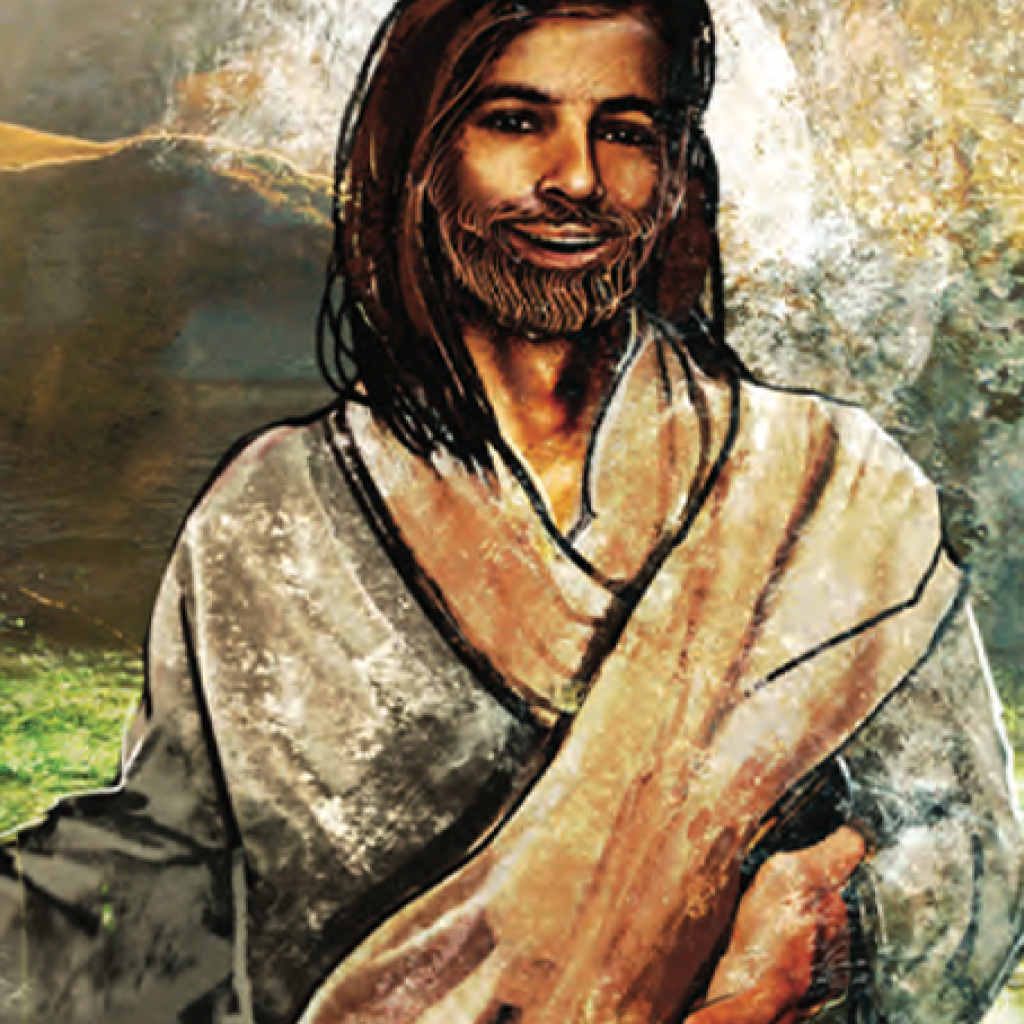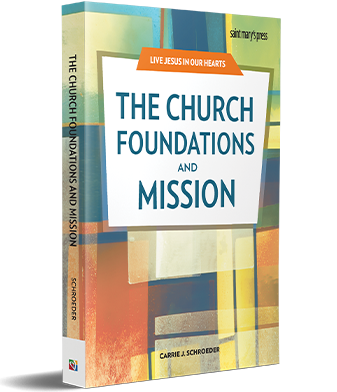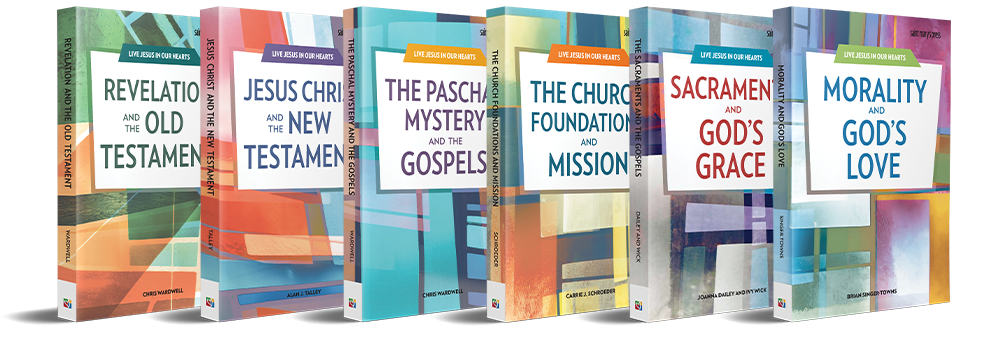
An Inexhaustible Mystery: Images of the Church in Scripture
If you were asked to describe what the Church is, how would you answer? Would your answer be about the buildings, the people, or the teachings? Once you have that description, how would you then describe the Church’s purpose?
That question doesn’t have an exact answer, and it’s a question that’s been explored since the earliest days of the faith.
The Catechism of the Catholic Church refers to the Church as “an inexhaustible mystery” (CCC, 753). This means that literal language alone isn’t adequate to describe the Church’s reality. Throughout history, different symbols, metaphors, and images have been used for the Church with each offering a deeper insight into its reality.
Some images of the Church can be found in various passages of Sacred Scripture. In the Old Testament, these images foreshadow the Church, since it did not yet exist at that time. However, because the Church was part of God’s eternal plan for the salvation of the world, we find hints of what the Church will come to be. In the New Testament, these images serve to illustrate and inspire, helping us grow in our understanding of the Church that Jesus founded.
In this article, we walk through some of the most poignant examples of these images of the Church found in Scripture.
The Old Testament
Foreshadowing of the Church can be found as early as the Book of Genesis, where we find the story of Noah and his family escaping the Flood (see Genesis, chapters 5–10). The ark where Noah, his family, and the creatures taken aboard are protected is an early foreshadowing of the Church, which protects and saves the faithful from the danger of sin.
The water of the Flood serves as an illustration also. Whereas the people and the animals pass through the waters of the Flood and come to physical salvation, members of the Church pass through the waters of Baptism and come to spiritual salvation, in and through Jesus Christ.
Then, when God makes the covenant with Noah (see Genesis 9:1–17), promising to never unleash such devastation again, we see evidence of God’s saving love that will be fully and completely manifested in the Church.

After Noah, we find Abraham, who is seen as the father of the Chosen People of Israel. God formed his Chosen People from the faithful family of Abraham, Sarah, and Isaac. Similarly, the Church was started with the faithful family of Mary, Joseph, and Jesus.
From the family of Abraham, the Israelites grew in number (see Genesis 15:1–21), spreading throughout the known world, just as the Church, starting with Christ, has grown and spread in the time that has passed since then.
The Israelites then enter the Mosaic Covenant, marked by a sacrificial offering (see Exodus, chapter 24). Members of the Church today enter the New Covenant, which is marked by the sacrificial offering of Christ on the cross.
The New Testament
A particularly striking image in the New Testament is that of the Good Shepherd. The people of Israel at that time were keenly familiar with the practice of herding sheep, and they knew the qualities that separated a good shepherd from a bad one. Through this image, Jesus illustrates how he cares for “his flock.” As members of the Church, we are called to recognize his voice and follow him, nurturing a close relationship and trusting him fully.

Another image presented in the Gospels is the image of the vine and branches, given by Jesus in the Gospel of John. This image is rich with meaning. Jesus tells us that he is the true vine and that his Father is the vine grower. He shows us how dependent we are on God, the giver of life, when he tells us that we, the members of the Church, are the branches. “Just as a branch cannot bear fruit on its own unless it remains on the vine, so neither can you unless you remain in me. I am the vine, you are the branches” (John 15:4–5).
This illustration is a powerful symbol of our reliance. Without Christ, we have no life, just as a branch withers and dies when it is cut off from the tree.
Finally, the Apostle Paul presents us with a well-known image: the Church as the Body of Christ. In this illustration, Paul shows us that like a body, the Church is composed in unity but made of many unique parts. “As a body is one though it has many parts, and all the parts of the body, though many, are one body, so also Christ” (1 Corinthians 12:12).
He continues the analogy by telling us how “the body is not a single part, but many.” (1 Corinthians 12:14). He tells of the difference between hands and feet, and eyes and ears, and explains the reason for the Church’s vast diversity: “If the whole body were an eye, where would the hearing be? If the whole body were hearing, where would the sense of smell be?” (verse 17).
The image of the Church as the Body of Christ is a phenomenal way to understand the gifts of the Holy Spirit, why some have different gifts than others, and how we are each called to a unique, and important, vocation in life.
Praying with Imagery
The images of the Church covered in this post represent only some of those found in Scripture. Spending time in prayer and reflection around these images can continually bring new life to our own understanding and practice of what it means to be Church. It can help us learn how God is speaking to us today. How incredible is that?
The Catechism quotation in this blog post is from the English translation of the Catechism of the Catholic Church for use in the United States of America, second edition, number 753.Copyright © 1994 by the United States Catholic Conference, Inc.—Libreria Editrice Vaticana (LEV). English translation of the Catechism of the Catholic Church: Modifications from the Editio Typica copyright © 1997 by the United States Catholic Conference, Inc.—LEV.
The Scripture quotations in this blog post are from the New American Bible Revised Edition © 2010, 1991, 1986, 1970 Confraternity of Christian Doctrine, Inc., Washington, D.C. All Rights Reserved. No part of this work may be reproduced or transmitted in any form or by any means, electronic or mechanical, including photocopying, recording, or by any information storage and retrieval system, without permission in writing from the copyright owners.

Inspiration for this blog post was taken from The Church: Foundations and Mission, a text from our high school framework series, Live Jesus in Our Hearts. To explore more of this course and other images of the Church, head to the series page here.


